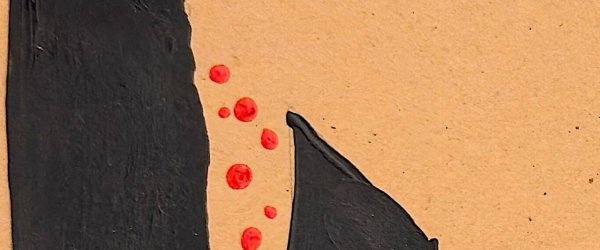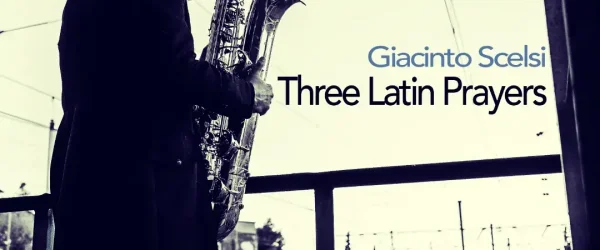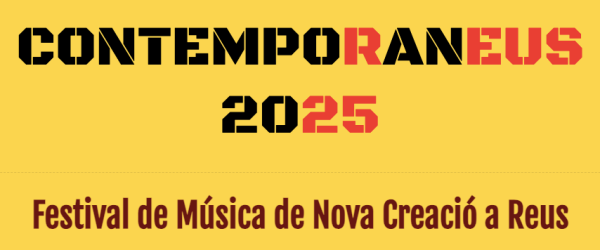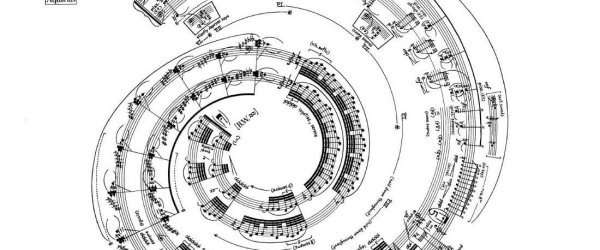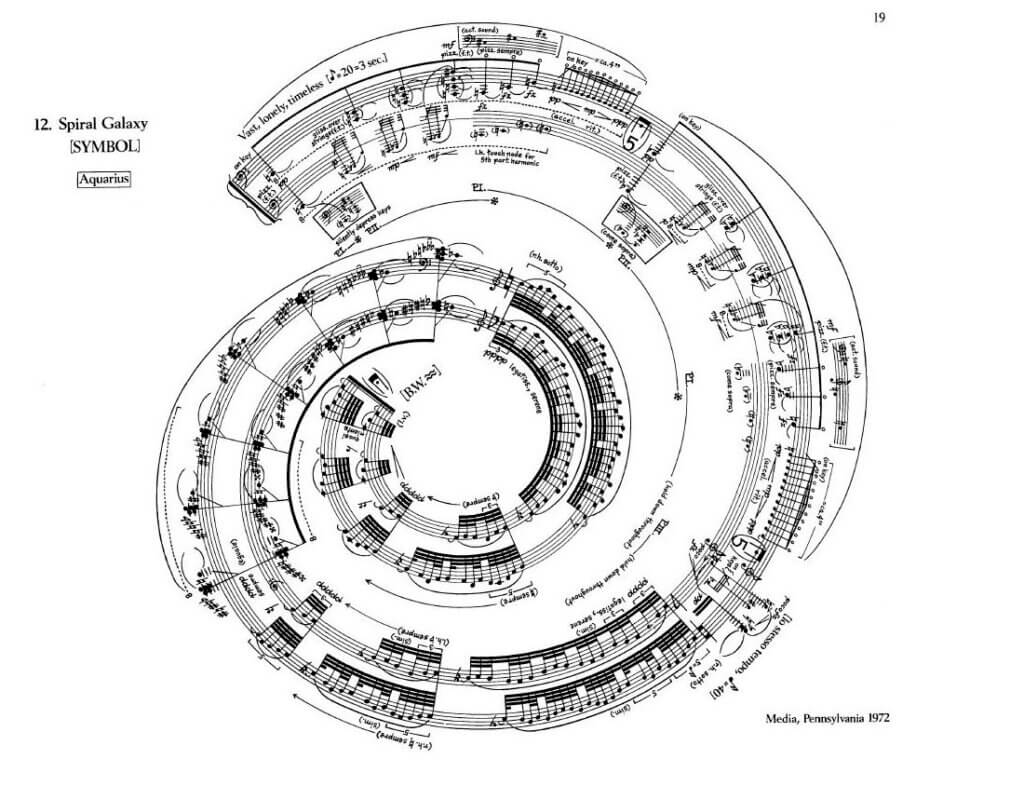
Excerpt from “Makrokosmos” (1972) by George Crumb
In recent years, I have worked with graphic scores both with my conservatory students and in external workshops. This practice is an excellent introduction to contemporary music and a very engaging and enriching musical experience.
GRAPHIC SCORES
A graphic score is a textual representation of a work in which extra-musical elements are used instead of (or in addition to) conventional notation.
The extra-musical elements employed are often very diverse and can include lines, drawings, images, colors, symbols, or any other type of graphic representation. The arrangement of these elements should have the ability to suggest a musical interpretation.
A graphic score can be understood as a meeting point between painting and music. Depending on its graphics and/or notations, we can find scores that could be paintings and paintings that would work very well as scores.
Although in the Middle Ages we can find scores with very beautiful ornamental details, it is not until the mid-20th century that we can truly talk about graphic scores. Renowned composers such as John Cage, George Crumb, György Ligeti, and Karlheinz Stockhausen, among many others, wrote works using graphic scores.
GRAPHIC POETRY: CALLIGRAMS
In the field of literature, there is a trend that shares many analogies with a graphic score, despite the differences between both arts: calligrams. A calligram is a visual poem, a poem to be both read and seen. In other words, besides its literary meaning, it also has an aesthetic purpose.
The words are arranged to create an image related to the poem, without necessarily following the linear order of traditional poems. They can be strategically placed or use a specific type of writing to reinforce the poem’s meaning.
Although some visually beautiful poems can be found in the Hellenistic period of ancient Greece, calligrams as an art form were not fully recognized until the avant-garde and experimental literary movements of the early 20th Century. The avant-garde artist Guillaume Apollinaire was the one who coined the term calligram (from the French calligramme), which means “beautiful writing”.
INTERPRETATION OF A GRAPHIC SCORE
Obviously, any interpretation requires a previous preparation, just like any other type of score.
In contemporary music works with extended techniques, the composer usually explains the meaning of the notations used. This is the same with scores with a high number of extra-musical signs and graphics. Similarly, the composer may also choose not to indicate anything at all, leaving the interpretation entirely up to the musician.
Depending on the level of precision in the instructions, the interpretation of a graphic score is rarely ever exactly the same. Each performer may play the same score in a completely different way from another musician. In fact, even the same performer will rarely repeat their interpretation identically.
This is because graphic scores allow for imagination and the performer’s unique resources to come into play. So, would we be working with a kind of improvisation? I think so. Graphic scores should encourage the ability to express emotions and musical ideas in a highly subjective and spontaneous way.
In my comment on QUASI UNO SPECCHIO (2020) by Isabel Benito Gutiérrez (1981), I mentioned graphic scores. Read it here.
TRAÇSONOLOGY
TRAÇSONOLOGY is a very illustrative example of everything I am here explaining. This is the title of an album released by the Valencian label Liquen Records (LRCD016, 2020). It contains nine compositions created by fifteen different composers, improvisers, and sound artists, all based on the same graphic score. The author of this score is Adolf Murillo Ribes, a specialist in electronic music and video creation.
Sound comes naked, stripped of any connotation. It is, therefore, in the process of dressing it that it becomes imbued with meaning. This is why it is important that sound be the starting point of musical creation. A space for imagining, for surprising ourselves alongside and with others, for establishing connections and opening up to creative encounters (…). Contemporary notation demands an act of courage from the creator. It is a kind of unresolved cartography that the artist must navigate once again (…) (Adolf Murillo, 2020)
Read more here about the album and listen to it on Spotify:
—
Have you found this post interesting? Subscribe to my newsletter to receive other posts about the baritone saxophone and contemporary music.
Joan Martí-Frasquier
Barcelona, March 2025
